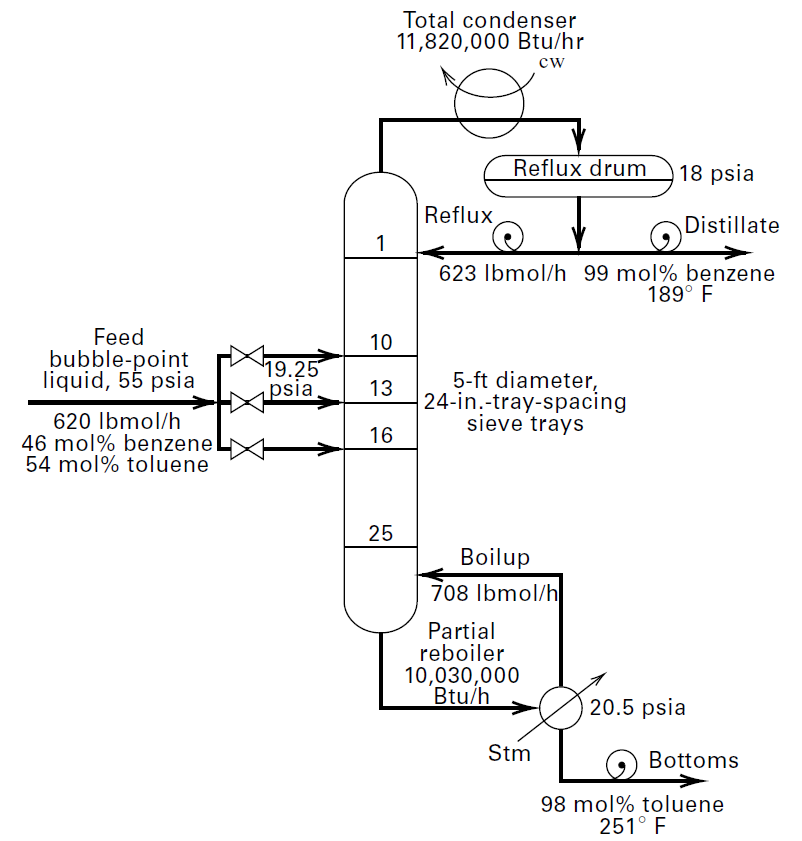
Distillation of a binary mixture of benzene and toluene [1]
Distillation is the dominant separation worldwide
…the unit operation rectification [distillation]… is the only technology which is capable to separate fluid mixtures into all pure substances.[2]
For more than 5,000 years distillation has been used as a method for separating binary and multicomponent liquid mixtures into pure components. Even today, it belongs to the most commonly applied separation technologies and is used at such a large scale worldwide that it is responsible for up to 50% of both capital and operating costs in industrial processes. It moreover absorbs about 50% of the total process energy used by the chemical and petroleum refining industries every year. Given that the chemical industry consumed 19% of the entire energy in Europe (2009), distillation is the big driver of overall energy consumption.[3]
Distillation scales up efficiently and reliably
The capital investment for distillation scales as a function of capacity to about the 0.6 power. Some other methods such as membranes tend to scale linearly with capacity. Thus, distillation often has a distinct economic advantage at large throughputs.[4]
…distillation is the benchmark separation method to which all other methods must be compared. Distillation should always be the first method considered for any separation. Moreover, when other methods give comparable results to distillation, the reliability and efficiency of distillation make it the likely choice.[5]
Of all factors influencing the decision to choose one process in preference to another, design reliability is the most important. Regardless of any other considerations, the plant, when constructed, must work properly to produce an acceptable product that can be sold at a profit.
Reliable design methods for distillation have been developed over many years of industrial experience and extensive testing of commercial-scale equipment by Fractionation Research, Inc. A competent engineering firm usually can design a distillation process given a knowledge of the pertinent physical properties of the components and vapor-liquid equilibrium information on the significant binary-pair components of the mixture to be separated. Occasionally, some small-scale testing is required, but scale-up methods for distillation are the most reliable of all the separation methods.[6]
- Seader, J. D., Ernest J. Henley, and D. Keith Roper. Separation process principles: chemical and biochemical operations. 3rd ed., John Wiley & Sons, 2011, p. 259.
- Mersmann, Alfons, Matthias Kind, and Johann Stichlmair. Thermal separation technology: principles, methods, process design. Springer Science & Business Media, 2011, p. 231.
- Górak, Andrzej. “Preface to the Distillation Collection.” Distillation: fundamentals and principles. Edited by Andrzej Górak and Eva Sorensen, Academic Press, 2014. pp. vii-viii.
- Kunesh, J. G., et al. “Distillation-Still Towering over Other Options.” Chemical Engineering Progress 91.10 (1995): 43-54.
- Barnicki, Scott D., and James R. Fair. “Separation system synthesis: a knowledge-based approach. 1. Liquid mixture separations.” Industrial & engineering chemistry research 29.3 (1990): 421-432.
- Null, H. R. “Selection of a separation process.” Handbook of separation process technology. Edited by Ronald W. Rousseau, John Wiley & Sons, 1987, pp. 982-995; p. 984.